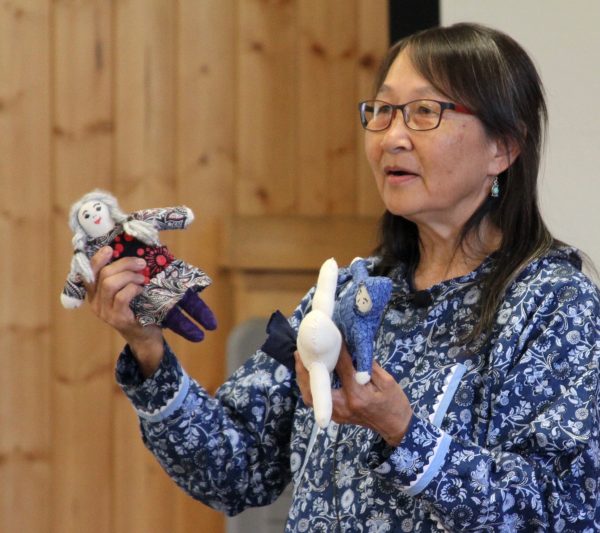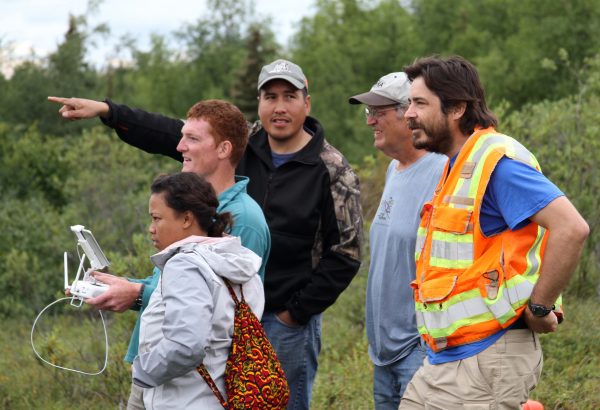Science, culture camp energizes rural Alaska teachers
September 11, 2017
Yuri Bult-Ito
907-450-8422

Download text and photo captions here.
Teachers and teaching aides from six villages in the Bering Strait School District immersed themselves in a science and culture camp in Unalakleet, Alaska, last month to learn how to integrate science and Native knowledge in the classroom.
The camp was offered as professional development for teachers by the Raising Educational Achievement through Cultural Heritage Up (REACH Up) program, part of the University of Alaska Fairbanks K-12 Outreach Office. Funded in 2015, the program provides Native students and teachers with place-based, culturally relevant science, technology, engineering and math curricula, and engages Native youth to come up with solutions to local climate change issues.
In a rustic Alaska camp setting, the week-long intensive camp featured a variety of activities including field trips with experts on salmon research, energy and drone vegetation mapping, as well as cultural activities and demonstrations of STEM curriculum developed by the REACH Up staff.
Cultural activities took place in the evening, including storytelling, making dolls and mittens, cutting fish and making subsistence food. They presented opportunities to learn not only skills and techniques but also how language and culture are interwoven.
“It was neat to see people sharing skills and at the same time sharing cultural knowledge embedded in the language. The cultural activities made me aware of subtle variations and dialects in the language,” said Laura Oxtoby, a marine ecologist with the UAF Geophysical Institute.

"Scientists don't have enough opportunities to have conversations with people who have different perspectives and such a long history of a relationship with the area," she said.
Oxtoby and UAF biology and wildlife student Roberta Walker led one field trip on the North and Unalakleet rivers. The participants learned about different species of salmon and their evolution and survival. They observed salmon-counting at a weir and discussed how climate change may affect salmon habitat.
“I was so used to see the surface of rivers but never realized so many little creatures live in the water,” Tyler Ivanoff of Shishmaref said. “It was cool to see how many things were related to make the whole ecosystem.”
Jeremy VanderMeer of the UAF Alaska Center for Energy and Power offered a briefing on energy efficiency, storage and place-appropriate energy sources to participants. They also visited a power plant in Unalakleet and learned about its operation.
“It was nice to see a facility that is usually hard to see,” said Brenna Cox of Stebbins. “It helps you understand the facilities in your area and helps you make curriculum and materials relevant to the kids you teach,” she said.

The participants also tried out REACH Up curriculum and lesson activities on permafrost, infrastructure and subsistence. Abigail Takak of Shaktoolik found them valuable “because they incorporate Native culture, so learning is more meaningful to students.”
Marie Otten-Pete of Stebbins agreed. “The hands-on classroom science activities were engaging and useful because you can use different senses — touch, smell, visual, auditory. Reading a textbook requires only visual sense, so I wouldn’t learn as much.”
The camp also offered a presentation on project resources that the participants could try in their schools and communities. Braxton Cox of Stebbins said those resources will help students “make connections beyond their village and help them realize the world is so much bigger.”
For more information, contact REACH Up Project Manager Sam Norlin at 907-450-8360 or at stnorlin@alaska.edu.


